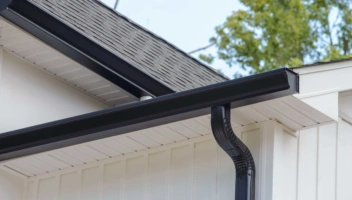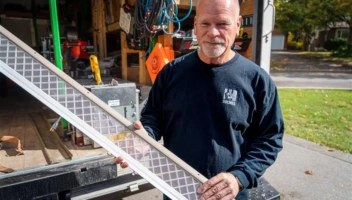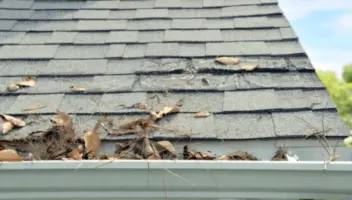What Is a Splash Block? A Complete Guide to Gutter Drainage Protection
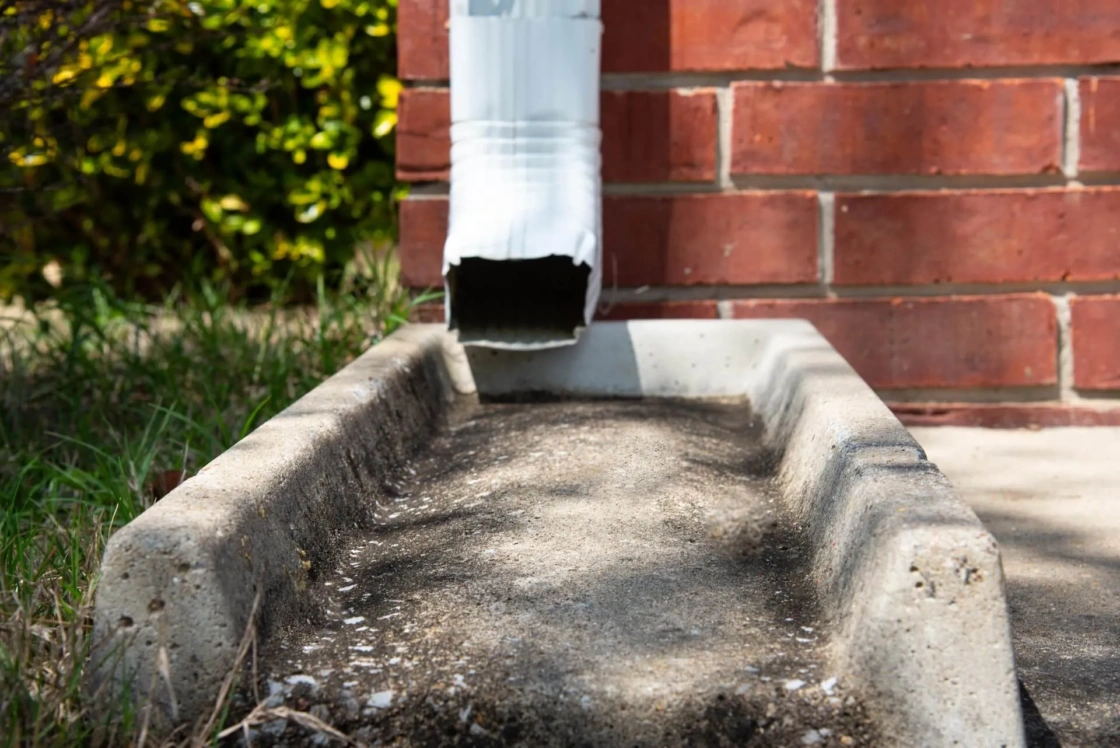
Understanding the handy tool that helps prevent damage and erosion
When it comes to a rain gutter drainage system, the goal is to keep water from damaging your home. But once it makes its way through the gutters, screens, and downspout, the water needs to be directed away from your foundation. That is where the splash block comes in. What is a splash block? It is the piece of your system that sits at the end of the gutter downspout. Your splash block helps prevent water from damaging your lawn and foundation.
In this article:
- Understanding Splash Blocks
- Types of Splash Blocks
- Installation and Maintenance
- Splash Blocks vs. Downspout Extensions
- Utilizing a Splash Block with Your Gutter System
- Frequently Asked Questions
Understanding Splash Blocks
Definition and Purpose
Splash blocks create a pathway for water coming down from your downspout. Made most commonly from plastic or concrete, these devices direct rainwater away from your home’s foundation as part of the gutter system. This helps prevent water from pooling or cascading at the base of the downspout, conditions that can lead to soil erosion, foundation damage, and basement flooding. Pooling and heavy flow can cause soil erosion as well as foundation damage and basement flooding.
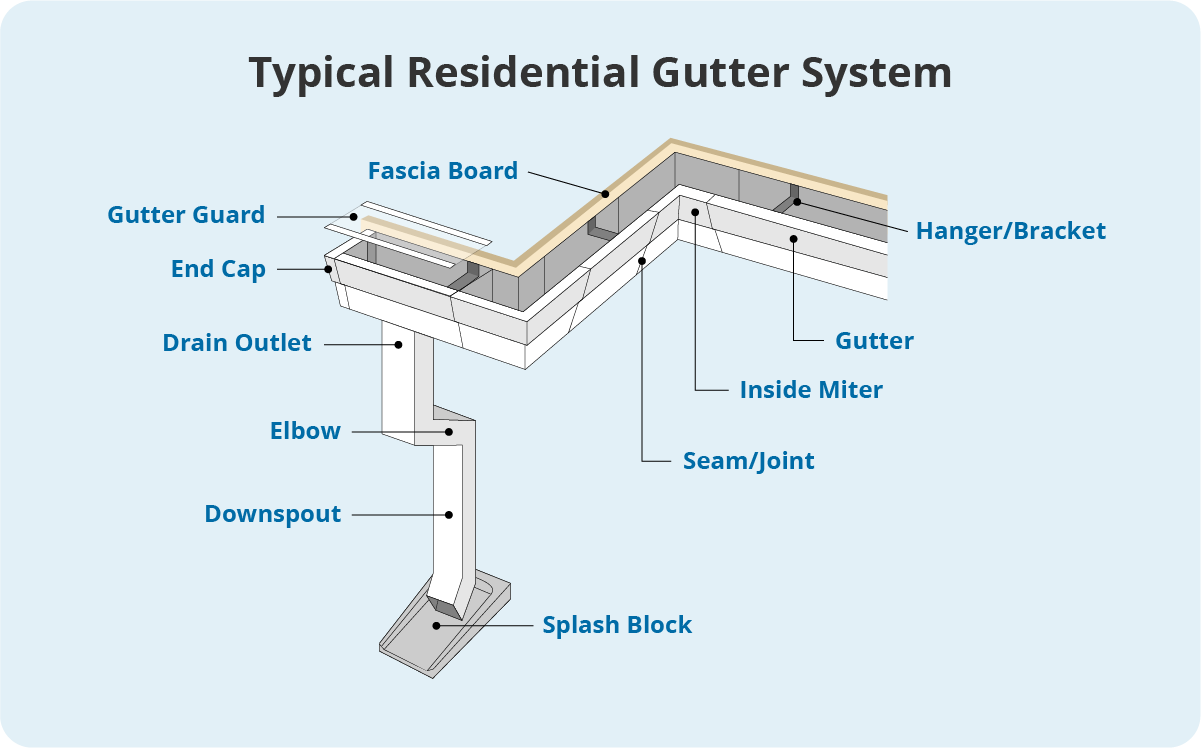
How Splash Blocks Work
To keep the water moving away from the home, splash blocks operate like a ramp. These devices allow any water from the downspout to move across the splash block and elsewhere to the lawn or a rain garden. Utilizing a splash block as part of your gutter placement, you can help prevent undue damage to your home.
In addition to being sloped, splash blocks are also designed to slow down the water as it comes through the downspout through their redirection. This gentler flow reduces erosion below the gutter system.
Types of Splash Blocks
Concrete Splash Blocks
If you’re looking for a highly durable, heavyweight option, concrete splash blocks are the best choice. Depending on their size, they can easily weigh over 100 pounds, so they stay exactly in their place. Since they’re made from concrete, they’re expected to last for decades even in extreme elements like heavy snow or rain. In fact, they’re the best option for climates that have a lot of precipitation or intense weather. However, because they are so heavy, concrete splash blocks are more challenging to install or move if needed.
Plastic Splash Blocks
For a more affordable option, plastic splash blocks are the answer. For the long term, they are best suited for locations with less severe, heavy precipitation since a lot of water can displace these lightweight blocks. Still, they’re easy to install and available in a wider variety of colors than concrete versions.
Since they are often built with UV resistance, plastic splash blocks are less likely to fade and crack, but they are only expected to last a few years before replacement, depending on your local weather.
Decorative and Custom Designs
Gutter splash blocks aren’t just functional; they can be aesthetic too! While protecting your lawn and home from damage, they can also seamlessly blend in with your unique look. From custom designs for a truly one-of-a-kind piece to a wide range of colors, shapes, and integrations, no gutter system has to look alike. You can even find decorative splash blocks designed to resemble miniature landscapes, such as streams or natural stone.
Installation and Maintenance
Proper Placement
Proper splash block placement is key to protecting your home and lawn from excess water. Remember that, particularly with plastic splash blocks, you may need to readjust placement after heavy rains or soil erosion from flooding.
To place your splash block:
- First, you want to get rid of any debris like gravel or grass from under the downspout. This ensures a stable, even surface for your splash block.
- Then, place the block on a slight slope so that the closed end is positioned behind the downspout and the open end channels water away from the house. If your splash block came with anchors, secure them in place.
- Finally, test the splash block with a hose to ensure water flows properly and adjust if needed.
Placement tips:
- Ensure the ground is stable and sloped, allowing water to slide down and away from the downspout. If your lawn beneath the downspout does not slope, you may need to create an angle for the splash block.
- Be sure you get the right size for your gutter system or local weather patterns. A two-foot splash block is the most common; however, if you have a large-capacity gutter or experience frequent heavy rain, a three- or four-foot splash block may be necessary to accommodate the water.
Common Mistakes to Avoid
- Incorrect positioning
-
-
- Placing the open end of the splash block towards the house. The closed end will trap water inside the splash block. When it eventually overflows, it will do so near the foundation.
-
- Uneven or shifting soil
-
-
- If the splash block is placed on uneven soil or the ground shifts, it won’t direct water correctly. Water can get out of the block and pool nearby. That’s why it’s essential to inspect the splash block after heavy rain or other extreme weather conditions.
-
- Wrong size splash block
-
- In places that receive a lot of rain or for homes with larger gutter systems, the wrong splash block can be a big problem. If it’s too small, it can’t accommodate the water coming in. That can cause the splash block to shift or even upheaval if it’s a lighter-weight material.
Maintenance Tips
The best way to maintain your splash block is to inspect and clean it regularly. At least once a season, check for any damage or fading. Homeowners should also periodically check for obstructions like leaves or twigs, which can obstruct the water flow. It’s a good idea to do these debris checks after big rainstorms for both your splash block and gutter guards.
Splash Blocks vs. Downspout Extensions
Two devices with similar functions, the purpose of both a splash block and a downspout extension is to move water away from your home. The biggest difference is that the extension physically relocates the water elsewhere, whereas a splash block simply redistributes the runoff.
Since a long downspout extension can relocate water much further away than a splash block, they are better for certain homes. Homes with very flat yards, a history of flooding or extremely heavy rain patterns should consider a downspout extension instead. They redirect water significantly farther from the home than a splash block can.
Utilizing a Splash Block with Your Gutter System
Splash blocks are a simple solution to water pooling and erosion. While your gutter system handles rain collection, splash blocks make sure the water is directed somewhere safe—away from your basement and foundation. They come in a range of materials, most commonly concrete and plastic. Regardless of the material you use, however, you must regularly maintain the splash block to help prevent blockages or damage.
When combined with Leaf Home’s gutter protection systems, your home and landscape will be better protected from runoff and pooling.
Frequently Asked Questions
Do I need a splash block for every downspout?
Yes, it’s a good idea. When you have a splash block for every downspout, the rainwater at any point in your gutter system has an alternative route to follow. Otherwise, it can pool near your home, which can cause soil erosion and flooding.
Can I use both a splash block and a downspout extension together?
Yes, you can! Place the splash block at the end of the extension, not directly under the downspout. This helps displace the water even further away from your home, making it a good option for homes in areas with heavy rainfall or a history of flooding.
How far should water be directed away from the foundation?
It depends on your home, the slope of your yard, and the local weather patterns. However, generally, displacing water at least four feet is enough to help prevent damage.
How often should I replace my splash blocks?
This depends upon the splash blocks themselves. Concrete splash blocks can last for decades, while plastic ones may need replacement sooner, depending on weather exposure. It is a good idea to replace them when you start to notice cracks or other damage, as well as water pooling around them.
